


There are several ways to increase your website traffic from Google. For example, by doing SEO on-page optimization for your product and service pages or running Google Ads.
Many e-commerce websites focus on getting traffic to their homepage, product category and product pages.
While, it’s important to have these pages rank high in Google, there is another way to grow your website’s traffic and that is with blog posts.
Having blog posts that are useful and relate to your customer’s problems and interests will help with brand awareness and will increase your sales.
There are many benefits to having a blog on your e-commerce website.
Let’s take a look at 5 successful blogs by e-commerce websites.
There are many examples of how online stores can use their blog to get traffic and build brand awareness. Below are five examples from the US and UK.
Salomon is an outdoor sports brand founded in 1947. They’re well known for their hiking boots, ski and snowboarding products.
Their website has 636,600 monthly visitors in the US.

The company has many Guides on how to choose different outdoor products. For example, there is a guide on “How to Choose Classic Cros Country Skis” which gets 1.5K visitors every month from Google.
It ranks for the keywords “cross country skis” search volume 12.1K in the organic search results and as a SERP feature in the People Also Ask questions. This guide also ranks as a Featured snipped for “how to size cross country skis”.
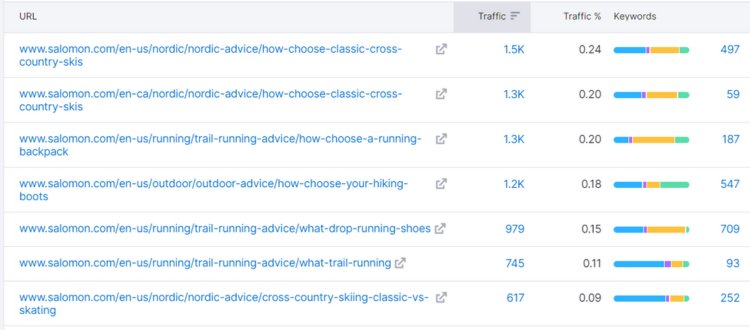
Once a person reads a Guide on their website, they can find lots of useful information on how to choose a product.
On these blog posts there are many Call to Action buttons and links, that lead a visitor to their product category pages.
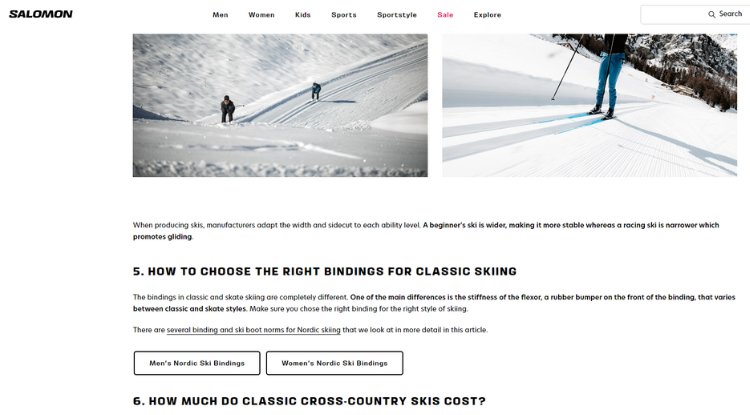
Visitors can click on a Call to Action button and then browse and buy products on the online store.
Briggs & Stratton manufactures and sells engines for outdoor power equipment, standby generators, lithium-ion batteries, lawn and garden products and more.
They sell their products online as well as through home centers and department stores, that’s why brand awareness is very important to their business.
Their website has 492,500 organic visitors every month in the US.

They have over 40 Buying Guides on their websites on topics such as How to Choose a Lawn Mower, How to Repair a Carburetor, and more.
Their “Lawn Mower Buying Guide” gets 13,000 visitors every month. On that page there are Call to Action links to their Push Lawn Mowers and Riding Lawn Mower products, so visitors can browse their products after reading the guide.
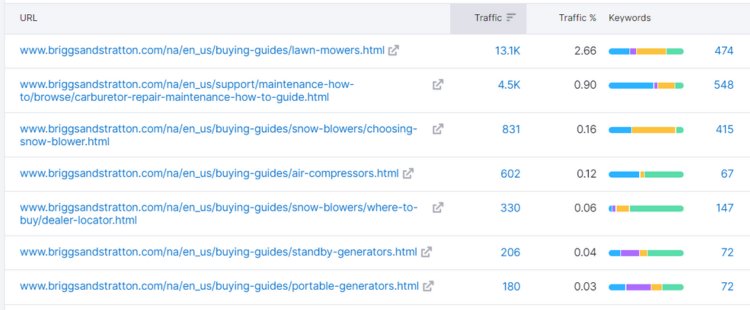
Additionally, Briggs & Stratton has a section on their website called “Support”, with useful information and tips on how to maintain and take care of different products.
There are over 1,100 such pages. Some of their more popular ones include:
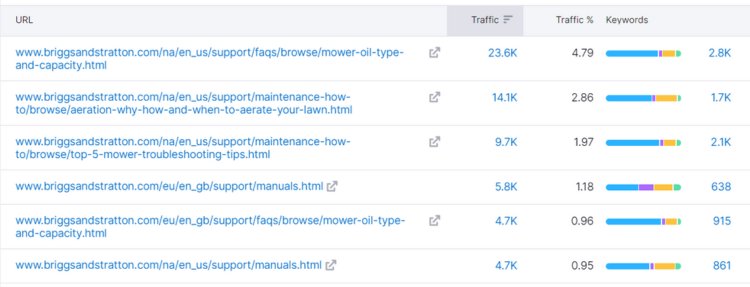
As you can see above, the page https://www.briggsandstratton.com/na/en_us/support/faqs/browse/mower-oil-type-and-capacity.html generates 23,600 visitors every month. Inside this article there is a link to the company’s Synthetic Oil so visitors can click and buy the product.
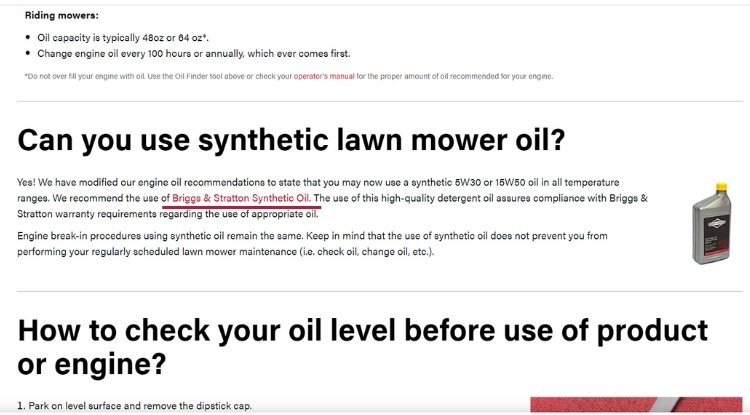
Briggs & Stratton’s website has been able to create content that’s useful and relevant to their customer’s interests. As a result, they are growing their brand awareness and generating visitors and sales.
Solo Stove sells fire pits, pizza ovens, camp stoves, patio heaters and other products and accessories related to fire pits. The company was founded in 2011 and since then it has become a $400 million backyard fire pit company.
Their website has 596,100 monthly visitors in the US, most of them from branded search terms.

Solo Stove has a corporate blog with many How-to guides, cooking tips, gear reviews and more.
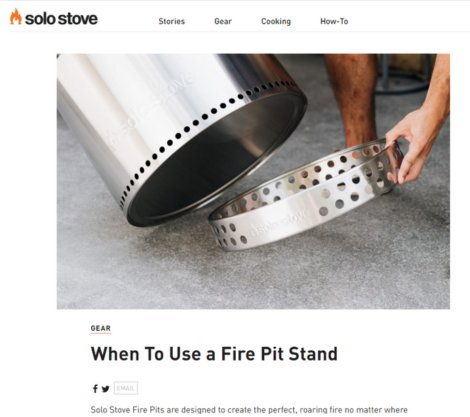
Time4Sleep is a popular bed and mattress supplier in the UK, that has been in business for over 15 years.
The company has only one showroom in Yorkshire, UK, which is closed on Saturday and Sunday. This means the online retailer is heavily dependent on online sales it generates from their website.
Looking at their website traffic we can see that the website gets around 106,600 organic visitors every month in the UK.

If we look at a breakdown of their URLs and pages, we can see that there are many blog posts and guides that bring them thousands of visitors every month.
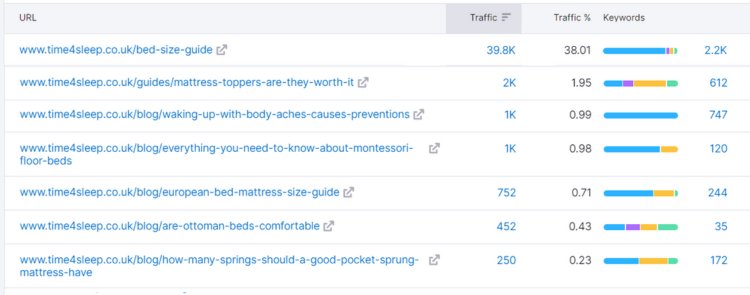
In particular the “Beds Size Guide” gets more organic visitors than their homepage. It ranks for hundreds of keywords, including: “double size bed” 33.1K volume, “how wide is a double bed” 3.6K volume, etc.
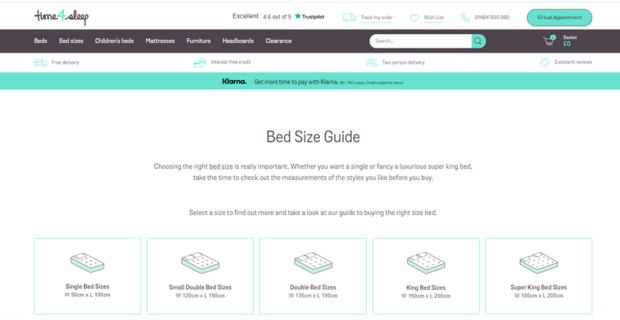
Generally people who are looking for more information on different mattress sizes, are also interested in buying a mattress down the line.
Once they know what mattress size is right for them, they’ll then start shopping for a mattress and they’re already on time4sleep.co.uk’s website with hundreds of products available.
Dunelm is a well known UK retailer with over 160 stores in the UK and an online store. They sell over 20,000 products in the furniture and home improvement sector.
They have been in business for over 30 years and their website receives around 8.1 million visitors.

They have many Buying Guides, as well as blog posts that rank for keywords that their product pages or product category pages are not able to.

For example their guide “How to measure for curtains” gets 11,500 visitors every month and ranks for 1,500 keywords in Google.
While, their blog post “Metal Wall Art” gets 1,400 visitors. Since Dunelm doesn’t have a category page for “Metal Wall Art”, their blog post ranks for generic and brand terms related to “metal wall art”.
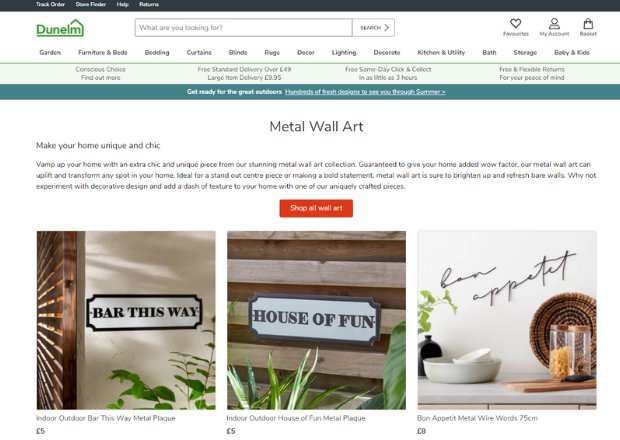
Once the visitors has landed on this blog post, then can browse different products and buy them.
Starting an ecommerce blog is easy. If you follow the guidelines below you’ll be able to publish blog posts that rank in Google and grow your organic visitors and sales.
You need to start off by doing some keyword research using an SEO tool such as Ahrefs or Semrush. You’ll be able to generate a large list of keyword topics and see their search volume and difficulty score.
If your website has high authority and is well established, you can start with content topics that have high search volume and SEO competition.
However, if your website is relatively new and low authority, you should pick long tail keywords with lower competition and difficulty.
Before you begin writing the blog post, look at who already ranks for that keyword in the SERP. Check the word length, the H1, H2, H3, and H4 for ideas. See if there are any unique images used, etc.
Make sure you create a similar or even better content on the same topic. Then share it across your social media profiles.
Having a blog on your ecommerce website is a great way to increase your monthly visitors and sales. The blog post will continue to rank long after it has been published.
Before you begin, make sure you do proper keyword research so you can select the terms that are worth targeting. Also, keep in mind that results won’t happen overnight, and you’ll need three to six months to see results from your SEO efforts.

SERP features are elements that show on Google’s search results page, in addition to the normal organic search results (the…

Publishing new and engaging content on your website on a regular basis is important for SEO and for building brand…

Internal Linking is probably the most overlooked and underrated SEO tactic, which if implemented correctly can help your site perform…

Discover the top 7 keyword research chrome extensions to improve website’s organic traffic. Learn about their features and how they…

Every eCommerce business wants to get more organic visitors to their store, who will ultimately convert and buy a product….